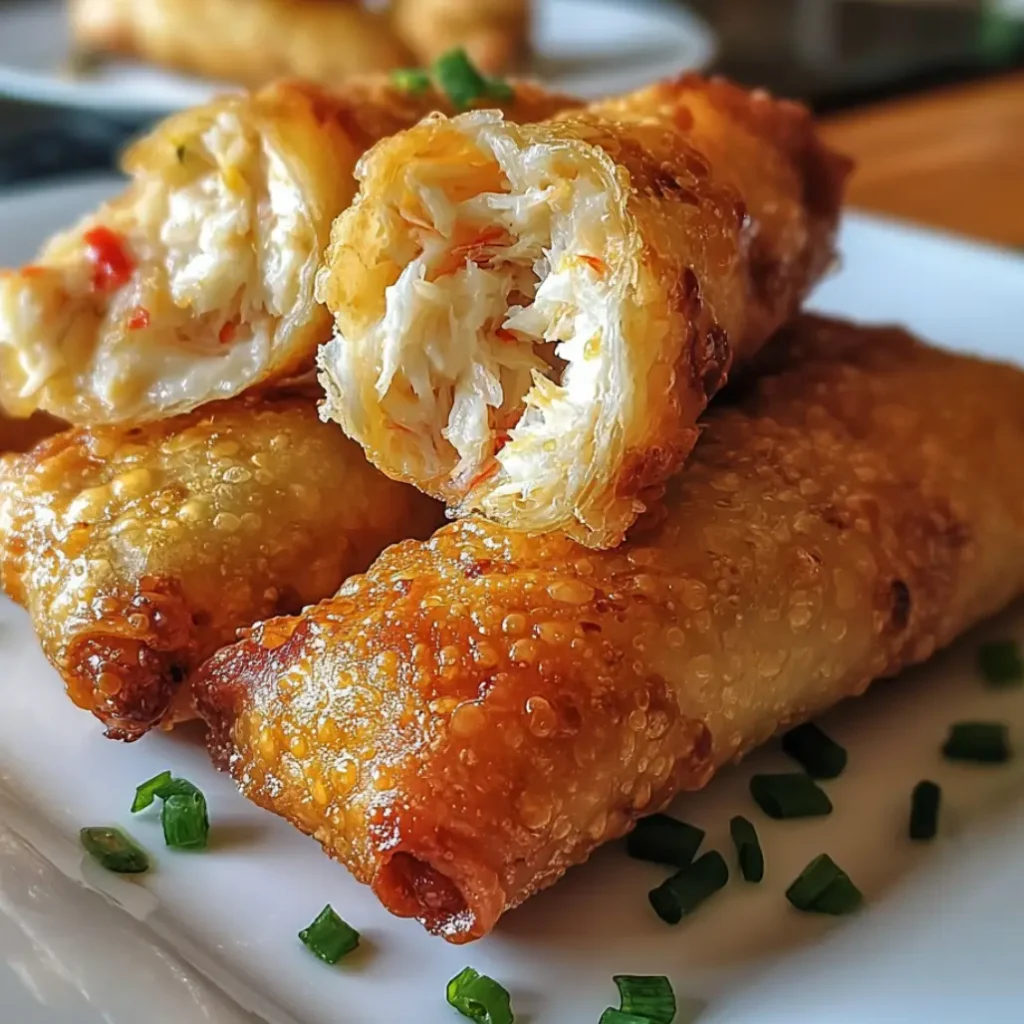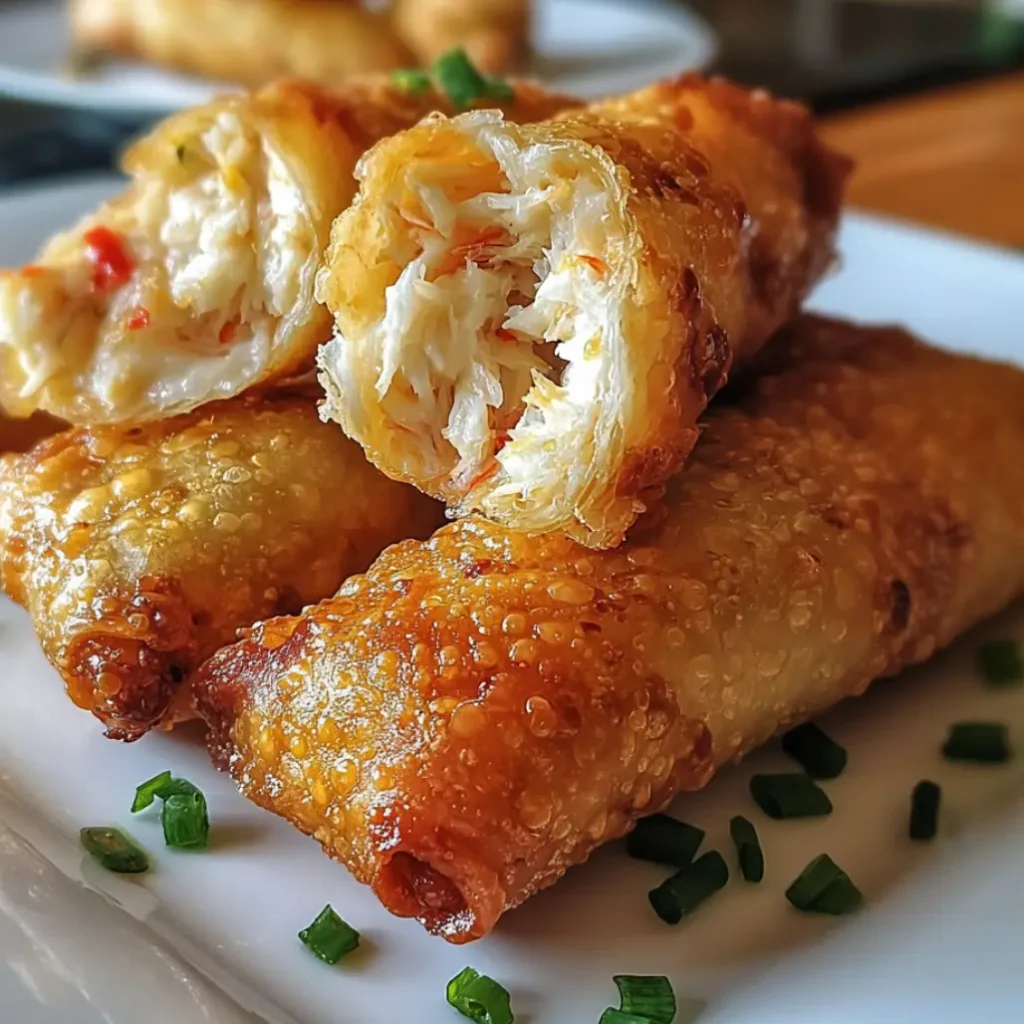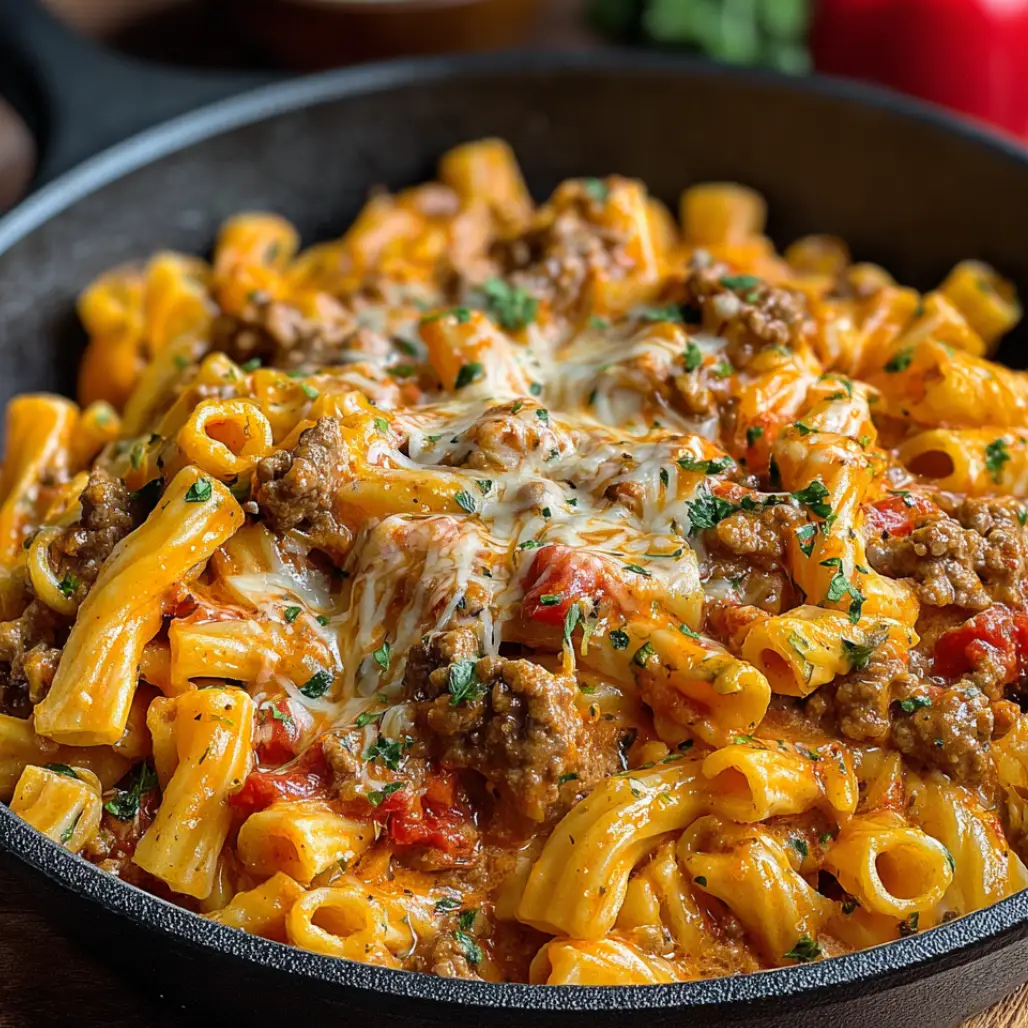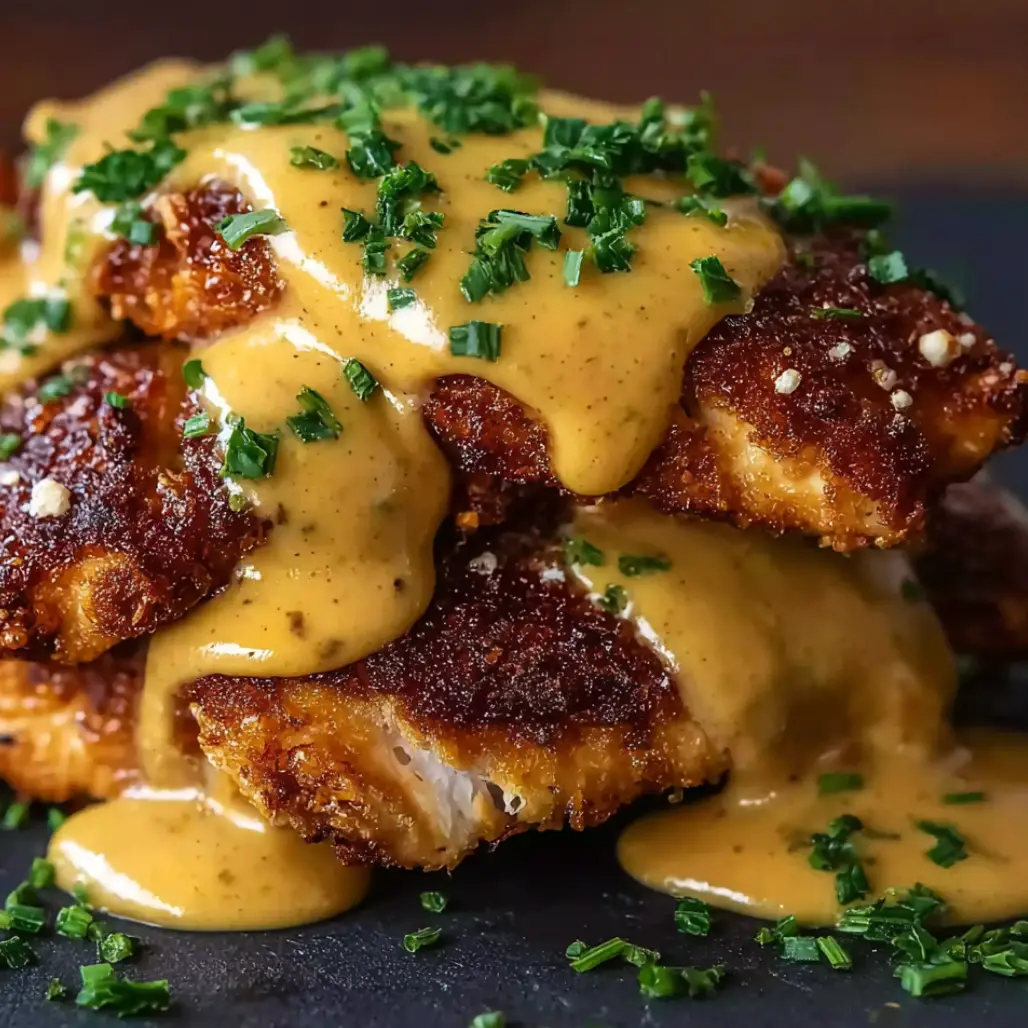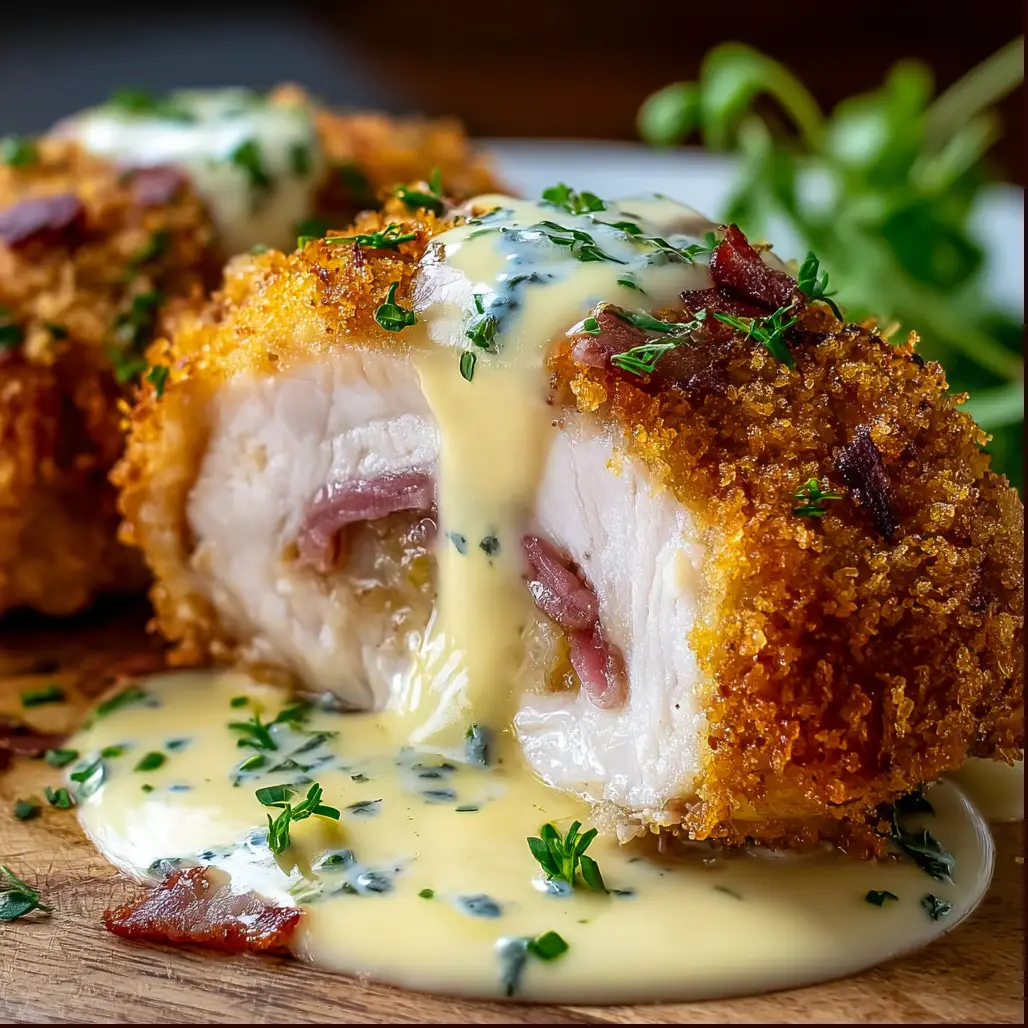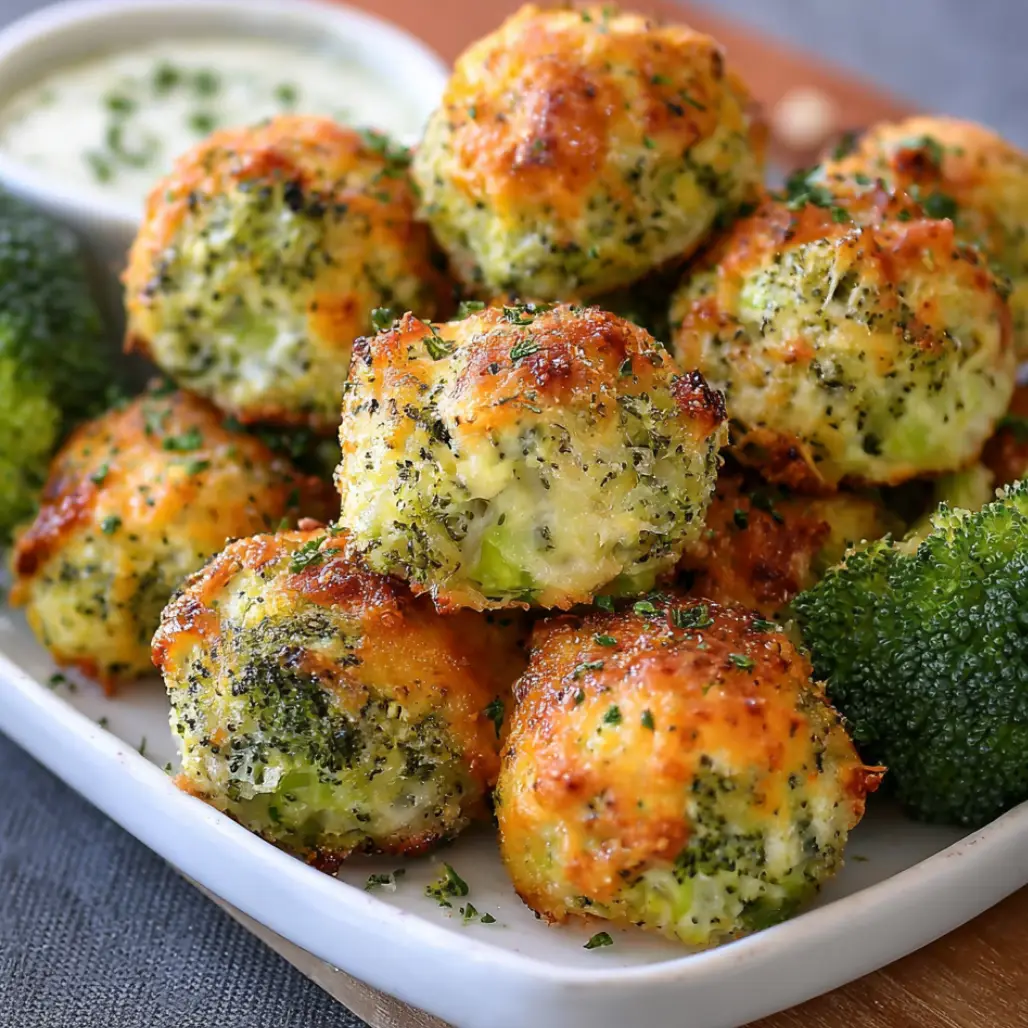| Prep Time: | 30 minutes |
|---|---|
| Cook Time: | 15 minutes |
| Total Time: | 45 minutes |
| Serves: | 8 |
These irresistible crab cake egg rolls represent the perfect fusion of Maryland’s most beloved seafood dish with the crispy appeal of Asian street food because they capture all the rich, succulent flavors of traditional crab cakes while delivering them in a portable, party-friendly format that guests can enjoy without utensils. The combination of premium lump crab meat, aromatic seasonings, and that satisfying crunch from the golden egg roll wrapper creates an appetizer that transforms ordinary gatherings into memorable dining experiences because each bite delivers layers of flavor and texture that complement each other in ways that neither dish could achieve alone.
This innovative take on classic crab cakes elevates your entertaining game because it combines the sophistication of Chesapeake Bay cuisine with the fun, accessible nature of finger foods, making it equally appropriate for casual backyard gatherings and elegant cocktail parties. The crispy exterior gives way to a creamy, well-seasoned interior that showcases the sweet, delicate flavor of fresh crab meat because proper technique ensures that every element works in harmony to create something truly special that will have your guests requesting the recipe.
Why These Crab Cake Egg Rolls Work Perfectly
The genius of crab cake egg rolls lies in their ability to solve the common problems associated with traditional crab cakes while maintaining all the flavors that make them so beloved because the egg roll wrapper provides structural support that prevents the delicate crab mixture from falling apart during cooking. Traditional crab cakes can be challenging to hold together and often require careful handling, but wrapping that same mixture in egg roll wrappers creates a sturdy package that can withstand frying while protecting the precious crab meat from overcooking.
The technique also allows for better portion control and presentation because each egg roll contains exactly the right amount of filling, ensuring consistent flavor and appearance across every piece served. The wrapper creates a moisture barrier that keeps the crab mixture perfectly tender while developing that coveted golden-brown exterior that provides textural contrast against the creamy interior because the high heat of frying crisps the wrapper quickly without drying out the seafood filling.
Furthermore, these crab cake egg rolls offer practical advantages for entertaining because they can be prepared in advance, frozen for later use, and cooked just before serving, allowing hosts to manage their time more effectively while still delivering restaurant-quality results. The individual portion size makes them ideal for cocktail parties and buffet settings because guests can easily grab one or two without committing to a full crab cake portion, and the lack of utensils required makes them perfect for standing reception-style events.
Essential Ingredients for Success
For the Crab Filling:
- 1 pound lump crab meat, carefully picked over for shells
- 1/2 cup mayonnaise
- 1 large egg, beaten
- 1 tablespoon Dijon mustard
- 1 tablespoon fresh lemon juice
- 1 teaspoon Worcestershire sauce
- 1 teaspoon Old Bay seasoning
- 1/2 teaspoon garlic powder
- 1/4 teaspoon hot sauce
- 1/3 cup panko breadcrumbs
- 2 tablespoons fresh parsley, finely chopped
- 1 green onion, finely sliced
For Assembly and Frying:
- 8 egg roll wrappers
- 1 egg, beaten for sealing
- Vegetable oil for frying (about 6 cups)
For the Old Bay Aioli:
- 1/2 cup mayonnaise
- 1/4 cup sour cream
- 1 teaspoon Old Bay seasoning
- 1 tablespoon fresh lemon juice
- 1 clove garlic, minced
- 1/4 teaspoon hot sauce
The Art of Creating Perfect Crab Cake Egg Rolls
Mastering these crab cake egg rolls requires understanding both the delicate nature of crab meat and the specific techniques needed for successful egg roll assembly because rushing through either process will compromise the final result. The crab mixture must be handled gently to preserve the integrity of the lump meat while ensuring that all seasonings are evenly distributed throughout the filling because overmixing will break down the crab into small pieces that lack the luxurious texture that makes these egg rolls so special.
Temperature control throughout the preparation and cooking process ensures optimal results because the crab mixture should be properly chilled before assembly to make handling easier, while the oil temperature must be precisely maintained during frying to achieve that perfect golden exterior without overcooking the delicate seafood interior. The wrapping technique requires patience and practice because properly sealed egg rolls prevent oil from penetrating the wrapper and creating soggy results, while ensuring that the filling stays contained throughout the cooking process.
Understanding the timing of each step allows you to coordinate preparation with serving because these crab cake egg rolls are best enjoyed immediately after frying when the contrast between the crispy wrapper and creamy filling is most pronounced. However, with proper technique, they can be prepared in advance and reheated successfully, making them practical for larger gatherings where timing coordination becomes essential for smooth entertaining.
Step-by-Step Instructions
Step 1: Prepare the Crab Mixture Foundation Gently examine the lump crab meat with your fingers, carefully removing any shell fragments or cartilage pieces because even small overlooked shells can ruin the eating experience for your guests. Place the cleaned crab meat in a large mixing bowl and handle it as little as possible to preserve the beautiful lump texture that makes this filling so luxurious because excessive manipulation will break down the meat into unappetizing small pieces.
Professional Tip: Work with the crab meat while it’s cold from the refrigerator because this helps maintain the integrity of the lumps and makes it easier to detect any remaining shell pieces that need removal.
Key Points: Quality crab meat is the foundation of this recipe, so invest in the best you can afford and treat it with the respect it deserves through gentle handling and careful inspection.
Step 2: Create the Binding Mixture Combine mayonnaise, beaten egg, Dijon mustard, lemon juice, Worcestershire sauce, Old Bay seasoning, garlic powder, and hot sauce in a separate bowl, whisking until completely smooth because this binding mixture must be evenly blended to ensure consistent flavor throughout every egg roll. The emulsion created by proper whisking helps hold the crab mixture together while adding moisture and flavor complexity that transforms simple crab meat into something extraordinary.
Professional Tip: Allow this mixture to rest for 5 minutes after whisking because this gives the spices time to bloom and develop deeper flavors that will enhance the overall taste profile of your finished egg rolls.
Key Points: The binding mixture should taste slightly more seasoned than you want the final product because the crab meat will dilute the flavors somewhat, and the frying process will mellow the seasonings further.
Step 3: Combine Crab and Seasonings Pour the seasoning mixture over the prepared crab meat and use a rubber spatula to fold gently, turning the mixture rather than stirring because aggressive mixing will break up the precious lump crab meat that provides texture and visual appeal. Add panko breadcrumbs, fresh parsley, and sliced green onion, continuing to fold gently until just combined because the breadcrumbs help absorb excess moisture while the herbs add freshness and color contrast.
Professional Tip: If the mixture appears too wet after adding all ingredients, incorporate additional panko breadcrumbs one tablespoon at a time because the consistency should hold together when pressed but not be so dry that it lacks moisture and richness.
Key Points: The finished mixture should hold together when pressed into a ball but not feel dense or compacted, with visible pieces of crab meat throughout rather than a homogeneous paste-like consistency.
Step 4: Chill the Mixture Cover the crab mixture and refrigerate for at least 30 minutes because chilling firms up the mixture and makes it much easier to handle during the wrapping process while allowing the flavors to meld and develop complexity. This step also prevents the filling from being too soft during assembly because room temperature filling can make the egg rolls difficult to seal properly and may cause them to leak during frying.
Professional Tip: Place the bowl of crab mixture in the freezer for 10 minutes if you’re short on time because this quick-chill method can substitute for longer refrigeration when necessary, though longer chilling produces better flavor development.
Key Points: Properly chilled filling should feel firm enough to scoop cleanly with a spoon and hold its shape when placed on the egg roll wrapper without spreading or becoming watery.
Step 5: Prepare for Assembly Set up your wrapping station with egg roll wrappers, beaten egg for sealing, a clean kitchen towel to keep wrappers from drying out, and a large plate or baking sheet lined with parchment paper for holding completed egg rolls because organization during assembly prevents wrappers from becoming brittle and ensures efficient workflow. Keep unused wrappers covered with the damp towel because exposure to air quickly makes them difficult to work with and prone to cracking during rolling.
Professional Tip: Work with one wrapper at a time while keeping others covered because egg roll wrappers dry out quickly in ambient air, and dried wrappers will crack when you attempt to roll them, ruining both the wrapper and the filling.
Key Points: Having everything organized and within easy reach allows you to work quickly through the assembly process before the wrappers become unworkable or the filling warms up too much.
Step 6: Master the Wrapping Technique Place one egg roll wrapper on your work surface in a diamond orientation with one corner pointing toward you because this position provides the best geometry for rolling and creates the tightest seal. Spoon about 2 tablespoons of the chilled crab mixture onto the wrapper about 2 inches from the bottom corner because this positioning allows sufficient wrapper material for proper sealing while preventing overfilling that can cause bursting during cooking.
Professional Tip: Use a small ice cream scoop or large spoon to measure filling consistently because uniform portions ensure even cooking and professional presentation, while preventing some egg rolls from being too full and others too sparse.
Key Points: The filling should form a compact log shape on the wrapper without extending too close to the edges because you need clean wrapper edges for proper sealing that will prevent oil penetration during frying.
Step 7: Execute the Rolling Process Fold the bottom corner of the wrapper over the filling and tuck it under, pressing gently to eliminate air bubbles because trapped air will expand during frying and can cause the egg roll to burst. Fold in the left and right sides over the filling, creating a straight edge on both sides because neat edges ensure even cooking and professional appearance in the finished product.
Professional Tip: Press down gently but firmly as you roll to compress the filling slightly because this prevents loose wrapping that can lead to oil penetration, while ensuring the egg roll maintains its shape throughout the cooking process.
Key Points: Each fold should be snug against the filling without being so tight that it tears the wrapper, and you should see no air pockets or loose areas that could compromise the integrity during frying.
Step 8: Seal the Package Brush the top corner of the wrapper with beaten egg and roll the filled portion toward that corner, applying gentle pressure to create a tight cylinder because the egg acts as an adhesive that prevents the wrapper from unrolling during the cooking process. Press the seam firmly to ensure complete sealing because any gaps will allow oil to penetrate and create soggy spots that ruin the texture contrast that makes these egg rolls so appealing.
Professional Tip: Place each completed egg roll seam-side down on your prepared baking sheet because this position helps the seal stay closed while you finish the remaining egg rolls and prevents them from unrolling before cooking.
Key Points: Properly sealed egg rolls should feel firm and compact without any loose ends or visible gaps that could indicate inadequate sealing that will cause problems during frying.
Step 9: Prepare for Frying Heat vegetable oil to exactly 350°F in a heavy-bottomed pot or deep fryer because precise temperature control ensures even cooking and prevents the egg rolls from absorbing excess oil that would make them greasy rather than crisp. Use a candy thermometer to monitor oil temperature because visual cues alone are insufficient for maintaining the consistent heat needed for perfect results.
Professional Tip: Test the oil temperature with a small piece of wrapper because it should bubble vigorously immediately upon contact, indicating that the oil is hot enough to create the rapid sealing that produces crispy exteriors without overcooking the crab filling.
Key Points: Maintain oil temperature between 340°F and 360°F throughout cooking because temperatures below this range result in greasy egg rolls, while higher temperatures can burn the wrapper before the filling heats through properly.
Step 10: Execute Perfect Frying Carefully lower 3-4 crab cake egg rolls into the hot oil using a slotted spoon because overcrowding lowers the oil temperature and prevents proper browning while increasing cooking time unnecessarily. Fry for 2-3 minutes per side until deep golden brown because this timing allows the wrapper to crisp completely while heating the filling through without overcooking the delicate crab meat.
Professional Tip: Turn the egg rolls only once during cooking because excessive manipulation can cause the wrapper to split or the filling to leak out, and use tongs or a slotted spoon rather than a fork to prevent puncturing the wrapper.
Key Points: Properly cooked egg rolls should be uniformly golden brown with no pale spots that indicate uneven cooking, and they should feel crisp to the touch rather than soft or soggy in any areas.
Step 11: Complete the Cooking Process Remove the golden crab cake egg rolls from the oil and drain on paper towels for at least 2 minutes because this brief draining period allows excess oil to be absorbed while the residual heat continues to crisp the wrapper. Serve immediately while the contrast between the crispy exterior and warm, creamy interior is at its peak because this temperature and texture combination defines the perfect egg roll experience.
Professional Tip: Keep completed egg rolls warm in a 200°F oven if you need to fry multiple batches because this low temperature maintains crispness without further cooking the crab filling, allowing you to serve all the egg rolls at the optimal temperature.
Key Points: The finished egg rolls should be crispy enough to make an audible crunch when bitten but not so hard that they’re difficult to eat, with filling that’s heated through but still moist and flavorful.
Professional Tips for Consistent Success
Understanding the science behind successful egg roll preparation helps ensure consistent results every time you make these crab cake egg rolls because each component requires specific treatment to achieve optimal texture and flavor development. The crab meat must be handled minimally to preserve its delicate structure, while the wrapper requires precise moisture control to remain pliable during assembly yet crisp during cooking.
Oil temperature management represents the most critical factor in achieving restaurant-quality results because properly heated oil creates an immediate seal that prevents oil absorption while ensuring even browning throughout the cooking process. Many home cooks struggle with temperature control, but using a reliable thermometer and adjusting heat as needed ensures consistent outcomes that rival professional kitchen results.
For those interested in exploring complementary dishes, consider pairing these sophisticated appetizers with options from our snacks appetizers collection, which offers additional finger foods that can round out an elegant entertaining menu. The key to successful entertaining lies in choosing dishes that complement each other without overwhelming guests with too many rich or heavy options.
Timing coordination becomes essential when preparing these crab cake egg rolls for larger gatherings because the assembly can be completed hours or even days in advance, while the frying must happen just before serving to maintain optimal texture. This flexibility makes them ideal for dinner parties where the host wants to spend time with guests rather than being trapped in the kitchen during the cocktail hour.
Creative Variations to Explore
Transform this basic recipe into exciting new variations by incorporating different seafood combinations or regional flavor profiles that maintain the fundamental appeal of crab cake egg rolls while adding your own creative signature. Consider mixing lump crab meat with cooked shrimp or lobster because these combinations create more complex flavor profiles while maintaining the luxury feel that makes these appetizers so special for important occasions.
Spice variations can completely change the character of your egg rolls because different regional seasoning blends evoke various coastal cuisines and cultural influences. Try substituting Cajun seasoning for Old Bay to create a New Orleans-inspired version, or incorporate Asian five-spice and ginger for a more fusion-oriented approach that bridges the gap between the American crab cake tradition and Asian egg roll heritage.
Sauce variations provide another avenue for customization because different dipping options can highlight various aspects of the crab filling while adding visual appeal to your presentation. Consider offering multiple sauce options such as traditional cocktail sauce, spicy aioli, or sweet chili sauce because this variety allows guests to customize their experience according to personal preferences while creating a more interactive dining element.
For those who want to explore lighter options, you might browse our perfect sides collection for complementary dishes that balance the richness of these egg rolls with fresher, more acidic flavors that cleanse the palate between bites.
Perfect Pairing Ideas
These rich, indulgent crab cake egg rolls pair beautifully with beverages and accompaniments that either complement their luxurious nature or provide refreshing contrast because successful pairing enhances both elements without overwhelming your guests’ palates. Crisp white wines such as Sauvignon Blanc or Pinot Grigio offer bright acidity that cuts through the richness while their clean mineral notes complement the sweet crab meat without competing for attention.
For beer enthusiasts, light lagers or wheat beers provide effervescence that cleanses the palate between bites while their subtle flavors won’t overshadow the delicate seafood components because these styles are specifically designed to pair with lighter fare rather than competing with bold flavors. Alternatively, pilsners offer slightly more character while maintaining the refreshing qualities that make them ideal partners for fried appetizers.
Consider exploring our collection of refreshing beverages for non-alcoholic options that can provide similar palate-cleansing effects while accommodating guests who prefer not to drink alcohol. Sparkling water with citrus, iced tea with lemon, or even fresh cucumber water can provide the refreshing contrast needed to balance rich, fried foods.
The presentation becomes as important as the flavors when serving these elegant appetizers because visual appeal enhances the perception of quality and creates anticipation that improves the overall dining experience. Arrange the golden egg rolls on white platters with small bowls of colorful sauces because this contrast highlights the beautiful browning while making the food appear more appetizing and professionally prepared.
Discover More Seafood Delights
Expand your seafood appetizer repertoire by exploring recipes that share techniques or flavor profiles with these crab cake egg rolls because mastering related preparations builds confidence while providing variety for your entertaining menus. Understanding how to work with delicate seafood transfers directly to other dishes such as fish cakes, seafood salads, or stuffed mushrooms because the fundamental principles of preserving texture while building flavor remain consistent across different applications.
The egg roll wrapping technique opens doors to countless other fusion appetizers because once you master the basic folding and sealing methods, you can experiment with different fillings that combine comfort food favorites with portable presentation formats. Consider adapting this technique for other regional specialties such as lobster roll filling, shrimp and grits mixture, or even crab dip preparations because the wrapper provides protection and portion control for many different types of moist fillings.
For morning entertaining or brunch gatherings, explore our breakfast favorites to discover dishes that can incorporate similar seafood elements in breakfast-appropriate formats. Building connections between different meal categories helps you become more versatile in menu planning while ensuring that your entertaining feels cohesive and well-planned rather than random or scattered.
Consider how these techniques translate to vegetarian alternatives because the wrapping and frying methods work equally well with plant-based fillings, allowing you to accommodate diverse dietary preferences within the same preparation style. This flexibility makes you a more inclusive host while demonstrating mastery of fundamental cooking techniques that transcend specific ingredients.
Storage and Make-Ahead Guidelines
Proper storage techniques ensure that your crab cake egg rolls maintain their quality and safety while providing flexibility for advance preparation that makes entertaining more manageable because complex appetizers require careful timing to achieve optimal results. Uncooked assembled egg rolls can be stored in the refrigerator for up to 24 hours when arranged in a single layer on parchment-lined baking sheets and covered tightly with plastic wrap because this prevents the wrappers from drying out while keeping the filling at safe temperatures.
Freezing provides even longer storage options because properly wrapped uncooked egg rolls maintain their quality for up to three months when stored in airtight containers with parchment paper between layers to prevent sticking. Label containers with the date and contents because frozen foods can look similar, and proper rotation ensures you use items while they’re still at peak quality rather than discovering forgotten items months later.
Cooked egg rolls present different storage challenges because the crispy texture that makes them so appealing deteriorates quickly when exposed to moisture or steam from refrigeration. While they can be stored in the refrigerator for up to three days, reheating methods become crucial for restoring acceptable texture because microwave reheating will make them soggy while oven reheating can restore much of the original crispness.
For optimal results when reheating, place stored egg rolls on a wire rack over a baking sheet and heat at 350°F for 8-10 minutes because this method allows air circulation that re-crisps the wrapper while heating the filling evenly throughout. Never attempt to reheat egg rolls in their storage containers because trapped steam will make them soggy beyond recovery.
The Science Behind Perfect Results
Understanding the scientific principles behind successful egg roll preparation empowers you to troubleshoot problems and achieve consistent results because each component involves specific chemical and physical changes that require precise conditions to succeed. The egg roll wrapper undergoes dramatic transformation during frying because the high heat rapidly dehydrates the surface while creating steam inside that puffs the wrapper and creates the characteristic crispy texture.
Protein coagulation in the crab filling occurs at specific temperatures, which is why gentle handling and controlled cooking are essential because excessive heat or agitation can cause the proteins to tighten and squeeze out moisture, resulting in tough, dry filling instead of the tender, succulent texture that defines quality crab cakes. The binding agents in the mixture work through different mechanisms because mayonnaise provides fat for moisture and richness, while eggs provide proteins that coagulate during cooking to hold everything together.
The Maillard reaction creates the golden-brown color and complex flavors that develop during frying because amino acids and sugars in the wrapper react under high heat to produce hundreds of flavor compounds that contribute to the overall taste experience. This reaction only occurs at temperatures above 280°F, which explains why proper oil temperature is crucial for developing full flavor rather than just achieving visual browning.
Understanding these processes helps explain why shortcuts rarely work in complex preparations like these crab cake egg rolls because each step serves specific scientific purposes that contribute to the final result. This knowledge empowers you to make informed adjustments when conditions aren’t perfect rather than blindly following instructions without understanding the underlying principles.
Troubleshooting Common Issues
Even experienced cooks occasionally encounter problems with complex preparations like these crab cake egg rolls, but understanding the causes helps prevent and correct most issues before they affect the final result because many problems develop from easily corrected technique errors rather than fundamental recipe flaws. Egg rolls that burst during frying usually result from overfilling, inadequate sealing, or oil temperature that’s too high because any of these conditions can cause rapid steam buildup that exceeds the wrapper’s ability to contain the pressure.
If your egg rolls absorb too much oil and become greasy, the most likely cause is oil temperature that’s too low because insufficient heat prevents the rapid sealing that creates the moisture barrier essential for crispy results. Always verify oil temperature with a reliable thermometer because visual cues can be misleading, especially in different lighting conditions or with different types of oil that may behave differently during heating.
Filling that leaks out during cooking typically indicates either wrapper damage during assembly or insufficient sealing around the edges because any gaps provide escape routes for the mixture under pressure from steam formation. Examine your wrapping technique carefully because small tears or inadequate egg wash application can cause problems that become apparent only during the cooking process.
Sometimes the wrapper browns too quickly while the filling remains cold, which usually means the oil temperature is too high because rapid surface cooking prevents heat penetration to the interior. Reduce the temperature and extend cooking time slightly because slower cooking allows more even heat distribution that ensures food safety while maintaining quality textures throughout.
Additional Fusion Inspirations
Extend your fusion cooking adventures by exploring other combinations that bridge different culinary traditions because the success of crab cake egg rolls demonstrates how thoughtful adaptation can create new dishes that honor both source cuisines while offering something genuinely novel. Consider lobster roll egg rolls using the classic New England combination of lobster, mayonnaise, and celery because this variation maintains the luxury seafood appeal while adapting to the portable egg roll format.
The techniques you master while making these appetizers translate directly to other fusion applications because understanding how to balance moisture, seasonings, and structural integrity opens doors to countless creative possibilities. You might explore our flavored dips marinades collection for sauce inspiration that could transform simple egg rolls into globally-inspired appetizers that reflect different regional flavor preferences.
Regional American specialties provide rich inspiration for egg roll adaptations because many traditional dishes feature moist, flavorful fillings that would work beautifully in portable wrapper formats. Consider shrimp and grits egg rolls, jambalaya egg rolls, or even pulled pork egg rolls because these combinations celebrate American regional cuisine while making it accessible in party-friendly presentations.
International fusion possibilities extend even further because the egg roll format accommodates many different flavor profiles that can introduce your guests to new taste combinations while maintaining familiar presentation styles. This approach helps expand palates gradually rather than overwhelming diners with completely foreign preparations, making you a more inclusive and thoughtful host.
Conclusion
These exceptional crab cake egg rolls represent far more than just another appetizer recipe because they demonstrate how thoughtful culinary fusion can create dishes that honor traditional flavors while embracing innovative presentation techniques that meet modern entertaining needs. The careful balance between Maryland’s beloved crab cake tradition and Asian egg roll methodology results in an appetizer that feels both familiar and exciting because it delivers expected flavors in an unexpected but delightful format that surprises and pleases guests.
Mastering this recipe builds confidence for tackling other complex culinary projects because the techniques you’ll learn, from delicate crab handling to precise wrapper folding, form the foundation for countless other sophisticated preparations that can elevate your reputation as a skilled home cook. The attention to detail required for success teaches patience and precision that will serve you well in future cooking adventures because good cooking fundamentally depends on understanding how ingredients behave and how techniques affect final results.
Whether you’re preparing these crab cake egg rolls for an elegant cocktail party or a casual gathering with friends, remember that the process itself contributes to the reward because cooking connects us to tradition, creativity, and the fundamental human pleasure of transforming simple ingredients into something memorable through skill, patience, and attention to detail that shows respect for both the ingredients and the people who will enjoy the results.

